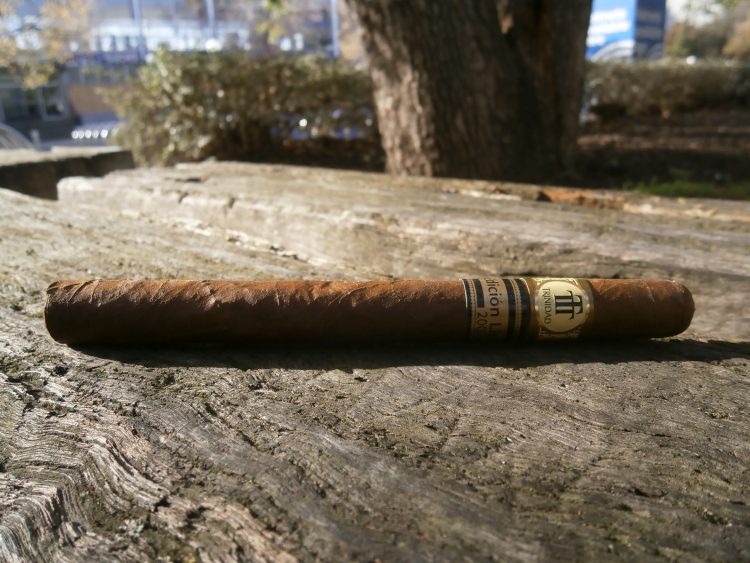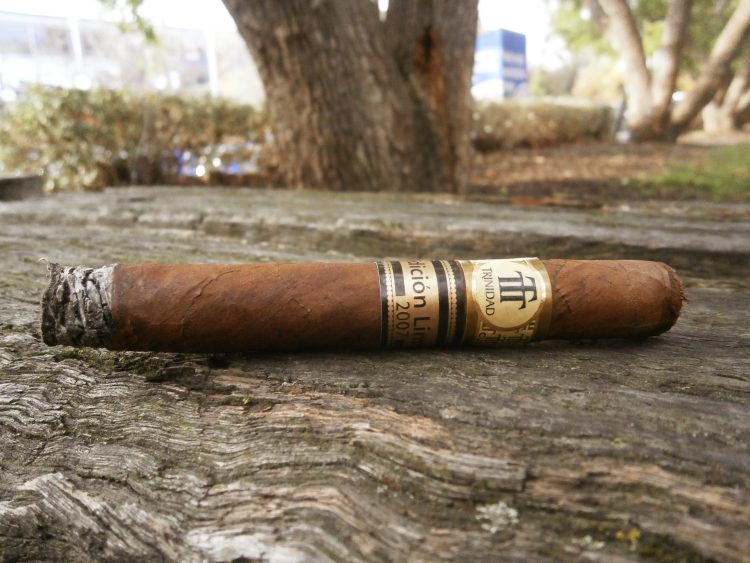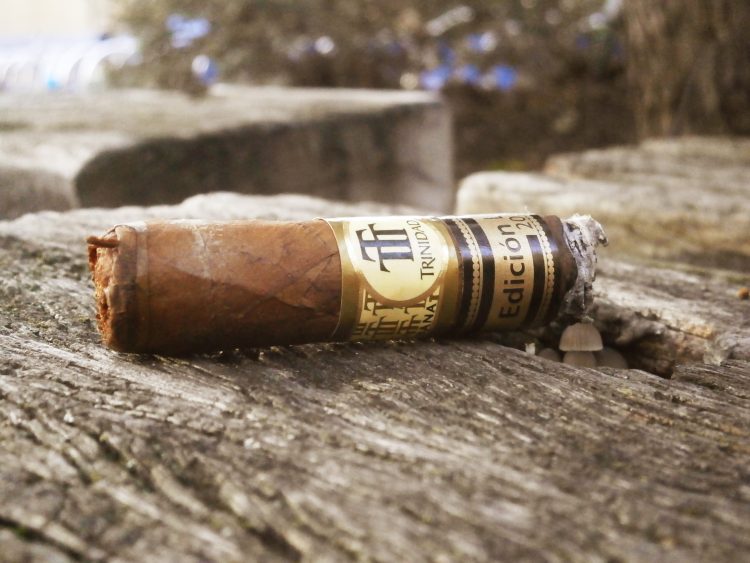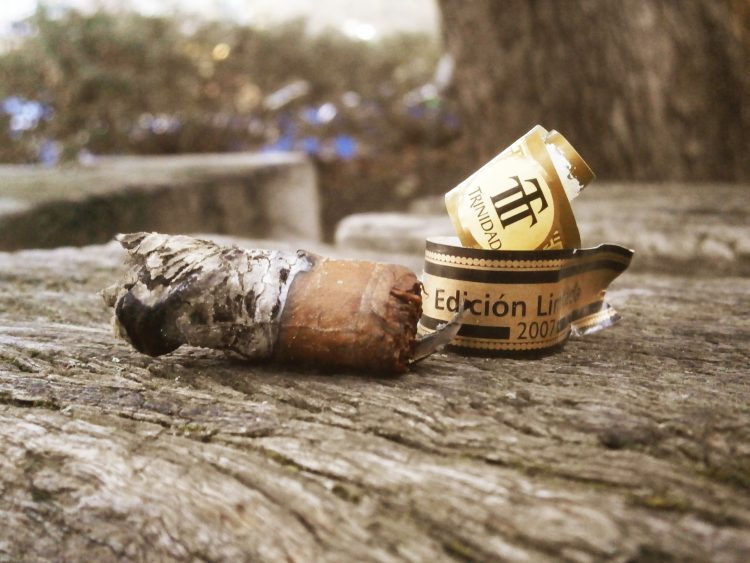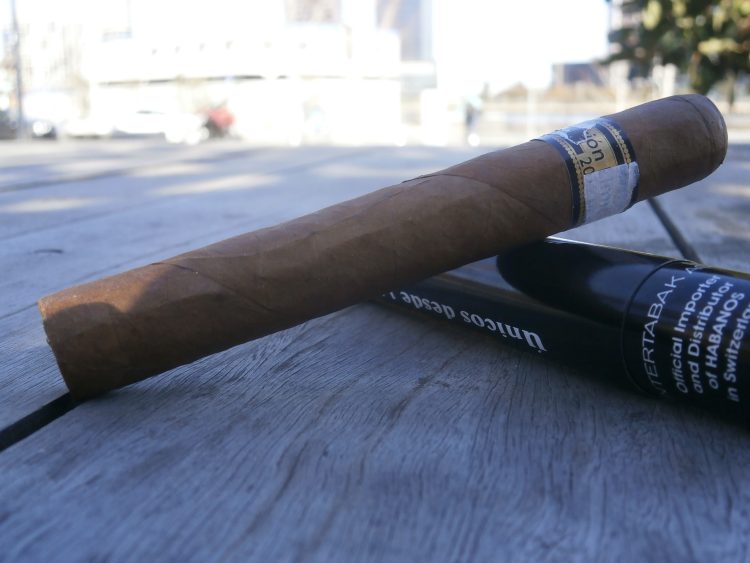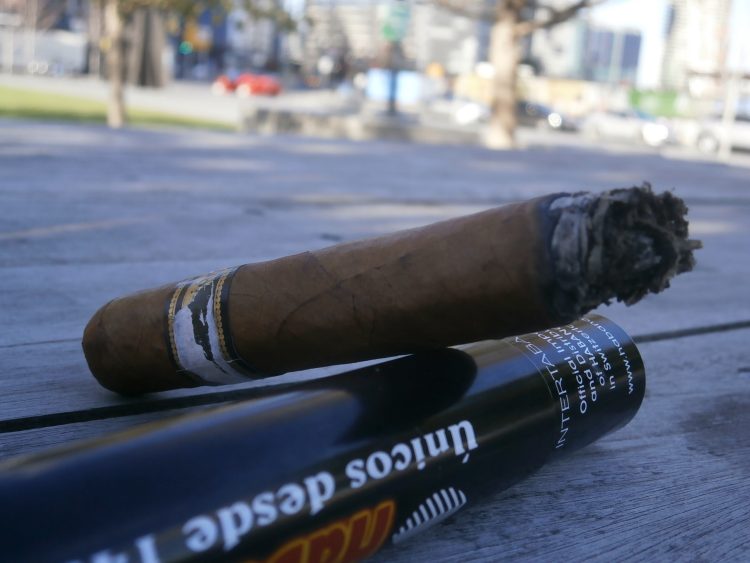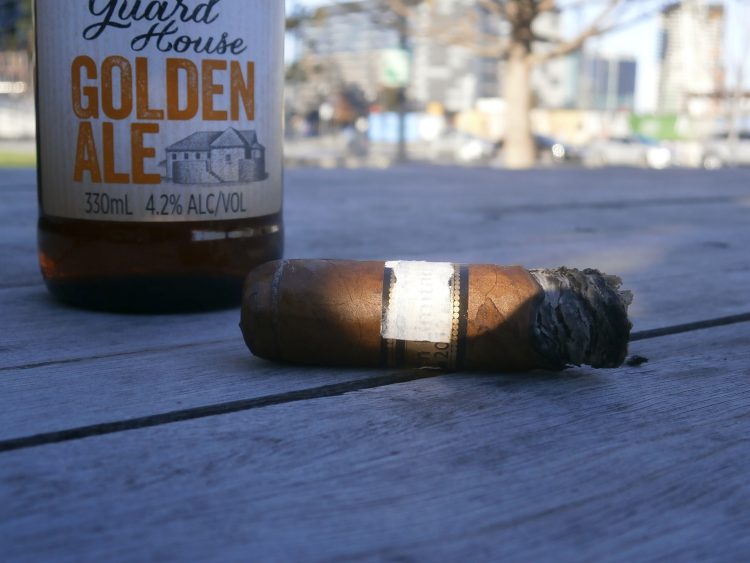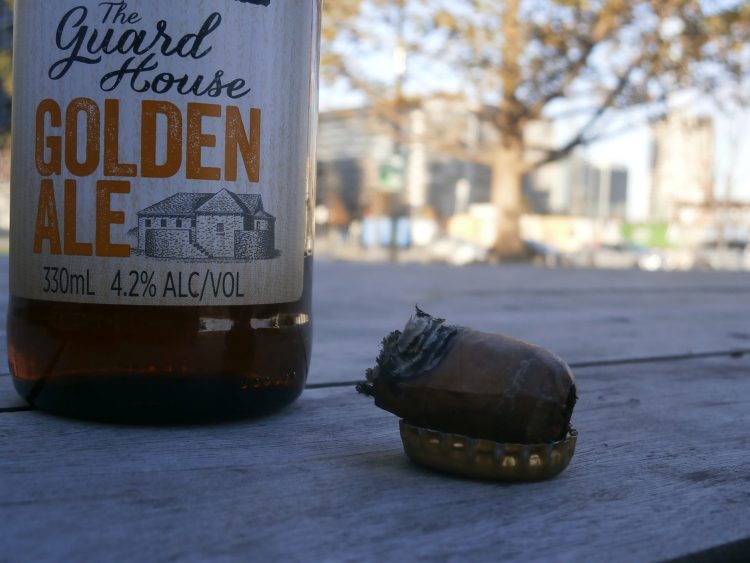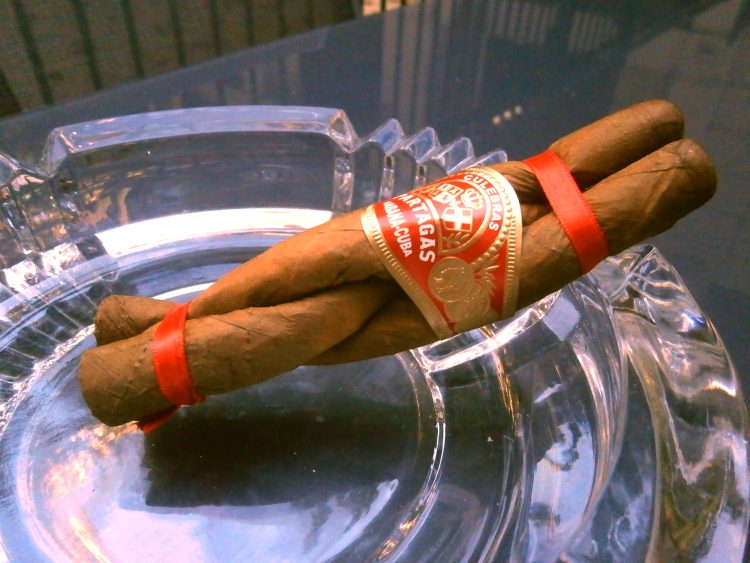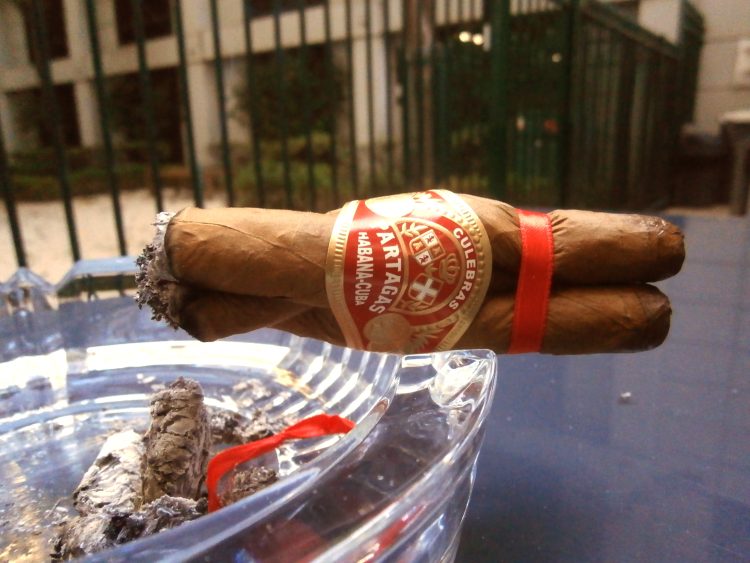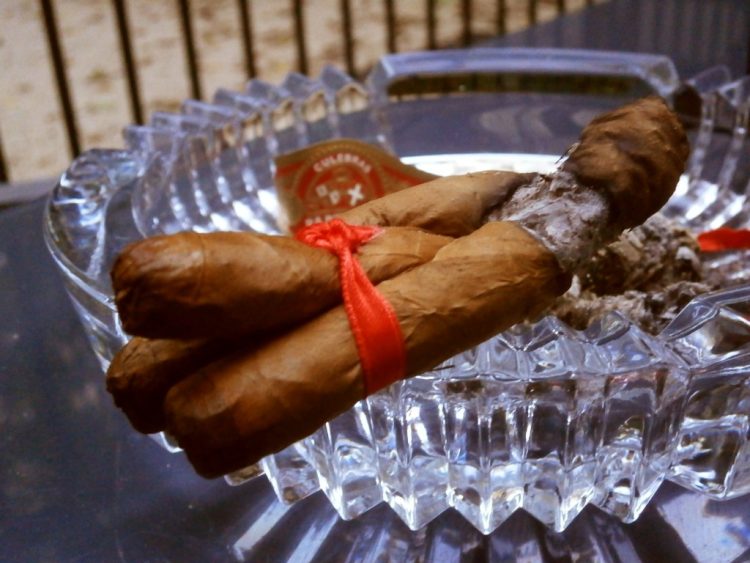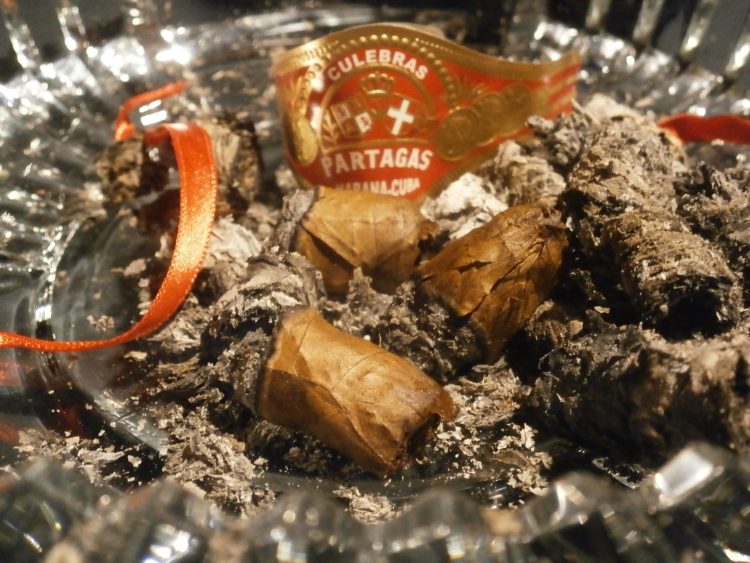With the end of the season soon upon us and my main series for the year long concluded, The Harem has reached a bit of a doldrums. I hesitate to smoke too dusky a beauty as I feel that the most precious cigars should be saved to burn alongside their sisters in some future series, and yet, the raison d’être of this column is the objective comparison of the rarest of collectable cigars. The net result is this: today’s cigar, the Trinidad Ingenios Edición Limitada 2007, chosen more or less by random chance.
With a 42 ring gauge, the Ingenios is the thinnest Edición Limitada released to date and, if current trends continue, it will remain the thinnest for a long while to come (2014 featured a 58 ring, 2015 has a 56). It’s a lovely looking thing, with a glossy chocolate wrapper and pigtail. It feels good in the hand, an elegant aristocratic smoke. Trinidad is not a brand I’ve ever really come to; for some reason the packaging makes me think of them as light cigars with a sweet, cinnamon and nutmeg bouquet. I don’t know why: that’s not at all what they taste like, but the false expectation nonetheless leaves me disappointed. This one begins very far from that place, strong and punchy, full tobacco with coffee and chocolate from the get go.
Trinidad, of course, is named for the Cuban town a few hours down the coast from Havana, a place we have visited before in these pages. It’s a seminal town in my cigar smoking life: I visited very early on my first trip to Cuba, and the run down domestic production factory on the outskirts of town was the first cigar factory that I ever set foot in. Behind the factory I bought a newspaper wrapped bundle of corona gordas from one of the rollers for two convertible pesos – a deal both parties were delighted with. Without the paperwork required for export, I had no choice but to smoke three of those cigars a day for the next two weeks, and left Cuba thoroughly enchanted by the leaf. It was also in Trinidad where I met the Australians.
I was sitting in a café with a friend drinking a Malta (a revolting Cuban malt extract soda), and complaining loudly about it in my broad Australian accent when I was addressed from behind by a tourist in equally broad ‘Strine. “That sounds like the mother tongue!” he said. “Where’re you blokes from?”
He turned out to live three streets over from the house I grew up in, and was traveling in Cuba with his British wife. They were about five years older than my friend and I; and quickly became friends, not because of any real shared interest, but because we seemed to run into them everywhere we went. I saw them every day that I was in Trinidad, and then a few days later in Cienfuegos, and a few days after that in Santiago. They showed up at the bus station as we departed for Havana, and we spent eight hours on the overnight coach not two feet away from them. They had become something of a joke between my friend and I: were they ASIO agents, we wondered, sent by our government to monitor our exposure to communist ideologies?
Mid-way through the Ingenios is very mild with a slight milkiness, not quite cream, but it leaves the lactic shock on the palette. There is the barest hint of promised nutmeg and, somewhere in the back there, a shadow of chocolate remains. An excellent smoke.
We had some respite from the Australians in Havana: we still saw them occasionally, but Havana is a big city and there were more places to hide. Things got really weird the next week though when we arrived in Mexico and found them in the hotel room next to us. Up to this point our relationship had been fairly casual: the odd shared drink, the occasional joke, but in Mexico we went sight-seeing together. “What are you guys up to today” the male had asked over buffet breakfast. We told him we were heading off to see the pyramids at Teotihuacán and he asked if they could join us. “Sure, why not?” They seemed friendly enough.
Mexico City sits at a famously high altitude: every guide book warns you to take it easy on your first few days there while your body adapts. It was extremely hot that day, a full sun beating down, and the pyramids at Teotihuacán are a heck of a climb. We were halfway up the Pyramid of the Sun by the time the woman started to complain. Long and loud, she protested, a sing song childish whine. She wanted to go down. She wanted a bottle of water. Eventually the guy gave us an apologetic look and said they’d meet us at the bottom.
When we saw them at the base of the monument an hour or so later, her complaints seemed to have escalated into an argument, and we were grateful when they told us to climb the Pyramid of the Moon alone and meet them at the entrance when we were ready to go. By the time we saw them again two hours later they were deep in a full blown domestic.
For most the bus ride through the slums they kept their bickering to muffled hisses, but once we got to the subway, away from the English speaking ears of the tourists, they erupted into an unbridled screaming match. She would say something, a complaint, and he would ignore her. Then she would repeat it, and accuse him of ignoring her, and then add another complaint, and so on until finally he snapped at her, at which point she would wail and scream until he yelled at her, at which point she would sulk for a few minutes before making another complaint and repeating the process ad nauseam. At one stage a camera was thrown. If there had been any plates around I’m sure they would have been broken. My friend and I were mortified, but what could we do? We were trapped on a train, and headed for the same destination. We rolled our eyes at each other at every repetition of the cycle, every carping over of the same tired points.
When finally we arrived back at the Zócalo and immediately made our excuses. “You guys go back” my friend said “we’re going to go get some dinner.”
“Oh, sounds good!” the guy replied. “Where are you going?” My friend looked at me desperately. It was imperative we not spend another minute with these dreadful people.
“Look, if I’m honest, we’re going to find some whores.” I said. “I’ve never been with a Hispanic woman and I really want to do it before I leave Mexico. We’re just going to head to the worst part of town and hang around until they find us.” He took a long look at his wife, and I think honestly considered coming with us: anything was better than the night of bickering he had in store for him back at the hotel.
“Ha, alright, you guys have fun” he said eventually.
The next morning he knocked on our door bright and early. “So sorry about yesterday, guys” he said. “I love her, but she’s just a real bitch sometimes, y’know?” We murmured vague kind of disagreement you murmur when politeness dictates that you have to disagree with something you entirely agree with.
“Hey, I was wondering, do you guys have any room in your bags? Could you take some stuff back to Australia for us?” He proffered a brown paper package about the size of two keys of black tar heroin.
“It’s just a camping stove and some souvenirs… we’ve got another month of trekking in front of us, and we won’t need them anymore. You can open it if you like.” Taking pity on the poor bastard and wanting to get him out of my room, I instantly agreed.
“No problem. No need to open it, I trust you.”
With a bit over an inch to go the chocolate is back in force. The tobacco strength is full, with heavy nicotine, and there is a smoky tar involved, but it’s sweet rather than sour tar. A bittersweet chocolate bomb.
After twenty five hours or so in the air we arrived at Cairns International Airport and when the customs officer saw the Mexican stamp in my passport he sent me straight to the inspection line. The officer on inspection duty was a young, jolly sort of fellow, who I think must have been fresh from training as he did the most thorough job of a bag inspection I have ever seen. Socks were unrolled. The pages of my books we thumbed through. Eventually, of course, he got to the brown paper package.
“What’s this?” The first questions he had asked me were “are you carrying anything for anyone else” and “did you pack your bags yourself.” I had answered “no” and “yes” respectively. I was caught out.
“Ah, it’s just a gift for a friend” I mumbled. All façade of joviality fell away.
“You don’t know what it is?”
“He said it was a camping stove.”
“How well do you know this person?”
“Ah well… y’know… I met them a few times… in Cuba… they’re Australians…” He signalled to someone, and four heavily armed customs officials appeared, taking stations between me and every exit. He withdrew a knife from somewhere and delicately cut along the seam of the package, delicately lifting up the corner of the wrapping. I contemplated what it would be like spending the rest of my life in prison. What do you get for heroin smuggling? Surely not more than 10 years with good behaviour. He lifted the flap a little further, peeking in, and then finally pulled the whole thing open. Inside was a camping stove and, inside that, a block of Cuban chocolate. The customs guy looked disappointed. The armed guards wandered off.
“I can’t let you bring this into the country, y’know” he said. “All food stuffs must be declared.”
“Can I eat it?” I asked.
“Sure.”
And so I did. A whole block of rich, dark Cuban cooking chocolate, straight down the hatch. And that’s what the Trinidad Ingenios tastes like. Although it doesn’t make me feel sick like that did.
The end of the cigar is rich and smooth. Yes, it is bitter, but it’s not unpleasant. I don’t feel any need to spit or rinse my mouth out or anything like that. In the final analysis, the Ingenios is probably not as good as the Torre Iznaga, but it is a very good smoke, and one of the better Edición Limitadas.
Trinidad Ingenios Edición Limitada 2007 on the Cuban Cigar Website.
